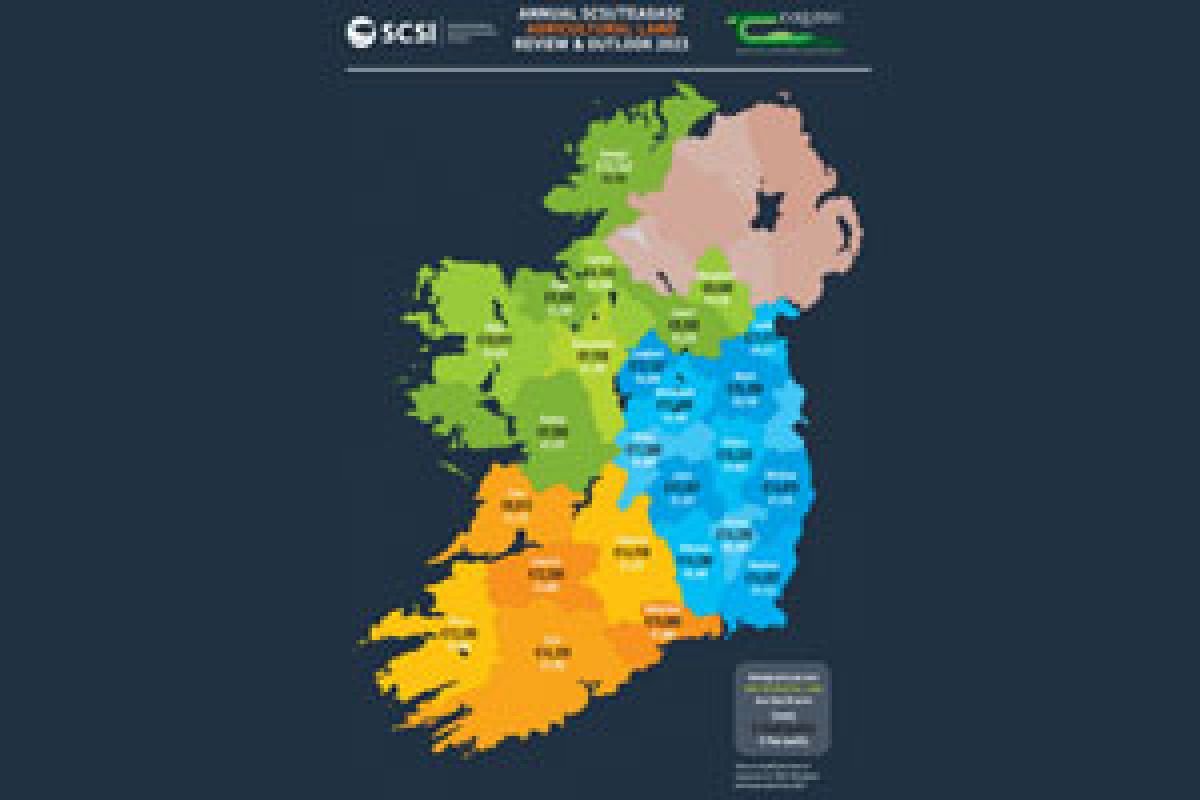Strong dairy sector underpins forecasted 8% rise in agri-land price

This increase is underpinned by a ‘strong dairy sector’ according to the Society of Chartered Surveyors Ireland/Teagasc Agricultural Land Market Review and Outlook Report 2023. And auctioneer and valuer members of the SCSI, operating in the agricultural and rental markets, say they expect national rental prices to increase at an even higher rate – an average of 14 per cent. They say prices will be driven by the constrained supply of land for rental and higher anticipated demand, particularly from the dairy sector due to new environmental regulations. Some of the other main headlines in the comprehensive report are:
- National average non-residential farmland prices in 2022 ranged from €5,564 per acre for poor quality land to €11,172 for good land;
- Overall, the most expensive land is in Kildare where good quality land is fetching an average of just over €15,000 per acre;
- The cheapest is in Mayo where poor-quality land is selling for an average of €2,866 per acre;
- Last year, average land rental prices in Munster and Leinster increased by 13 per cent and 9 per cent, respectively;
- Agents say land prices and demand for land will continue to rise mainly due to the dairy sector and low supply of land for sale;
- While significantly higher margins are forecast for cattle-rearing farms, 2023 will prove challenging for sheep and tillage farmers;
- Input costs which increased dramatically following Russia’s invasion of Ukraine are expected to remain at elevated levels in the short-term.
Chair of the SCSI’s Rural Agency Committee, Peter Murtagh, said strong demand for good quality land from dairy farmers is driving the market.
“Eighty-three per cent of agents in our survey believe there is likely to be an increase in demand from dairy farmers to purchase farmland in 2023 and they are continually ranked throughout the survey as being the most likely purchasers of land across the country. However, as outlined in this report it’s also likely that changes to the European Nitrates Directive, particularly measures aimed at protecting water quality will have an impact on land prices, especially rental prices.
“In order to maintain current levels of milk production – and to comply with the directive – many dairy farms will need to either increase their land area or reduce milk production. We’d expect the impact on sales and rental prices will be more acute in regions where dairy is the dominant farm enterprise and where stocking rates are higher.”
He said last year was a good year for tillage farmers and Leinster-based auctioneers and valuers in the survey said that demand for good arable land or land close to any sizeable dairy farms attracted strong interest and competitive bidding.
“That demand is also reflected in strong price growth in the dairy heartland of Munster where agents say one of the main drivers of the market was a heightened interest from individuals with their own funds looking to invest in land and guard against the effects of general inflation. While land prices are lower in Connacht / Ulster, the region recorded the biggest percentage increase in prices for good quality land and is forecast to do so again this year,” he said.
Teagasc economist, Dr Jason Loughrey, said Russia’s invasion of Ukraine is continuing to have a major impact on agricultural markets, at both international and domestic levels.
“As in many other countries the invasion resulted in higher energy and fertiliser prices for farmers here in Ireland, and these have remained at elevated levels despite some modest declines in recent months. The increased cost of many key inputs was a major concern throughout 2022, but these were counterbalanced by record milk prices and by significantly higher grain and meat prices.
“However, the price output picture this year is more difficult. For example, milk prices have declined from their record levels and while still high by historical standards, the average net margin per litre is set to fall below 15c this year. While a modest overall increase in milk production is forecast, recent changes to the Nitrates Directive will limit the extent of any growth.”





